Iran's Health Crisis: System Needs 60,000 Personnel
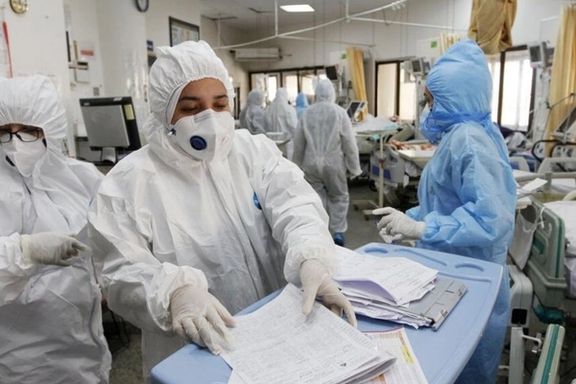
Iran's health ministry says the country's health care network is facing a shortage of 60,000 personnel as tens of thousands have emigrated under financial pressure.

Iran's health ministry says the country's health care network is facing a shortage of 60,000 personnel as tens of thousands have emigrated under financial pressure.
During a televised program on Thursday, Deputy Minister Hossein Farshidi talked about the ‘Family Physician’ plan saying that if the implementation of this plan was a simple task, it would have been implemented in previous administrations.
Iran's healthcare system has faced a workforce crisis in recent years, especially after the COVID-19 pandemic.
Driven by economic and professional problems, as well as a lack of social and political freedoms, an increasing number of Iran's healthcare professionals emigrate.
Salaries for professionals, such as nurses in Iran is less than $200 a month.
Thousands of physicians, dentists, midwives, and nurses have either emigrated in the past few years or are planning to leave for other countries.
There is no transparent data on the emigration of healthcare and other professionals, but medical officials and lawmakers often offer fragmentary information on the scope of the problem.
In 2022, 4,000 doctors applied for good standing certificates to be able to emigrate and find employment in other countries. A large number find jobs in the Persian Gulf Arab states, such as Oman.
In February, Mohammad Sharifi-Moghadam, a member of the central council of Iran's Nurses’ Organization, said between 2,500 to 3,000 nurses were emigrating from Iran each year, based on the number of requests for good standing certificates, confirming that the applicant is entitled to practice medicine in the country.

Revolutionary Guard commander Hossein Salami, visiting Iran's oil-rich Khuzestan, threatened "full war" against any opposition as the province struggled without water.
“We will fight robustly against those who take up arms against us. We will quash those who make the country unsafe, but we must rescue those who need help and are walking into fire,” he said on the sidelines of a meeting with local military and civil officials on Thursday.
The IRGC commander's warning served as a reminder that trouble can break out, as the people in the extremely hot region could engage in protests as they did in July 2021.
He also referred to the oil-rich Khuzestan Province as a place "where all the plans of the enemies come together." Salami enumerated these as "separatism, division among people, transformation of people into what the enemy seeks, and sanctions," adding that the enemy should not be allowed to make any moves in the province.
“We must assist the youth and save our children from the fire of the enemy,” he said, adding that the IRGC must "protect" everyone, whether they are revolutionary and religious or not, "against the massive plots of the enemy" and "save the youth from the claws and cultural war of the enemy."

“Salami has basically repeated his usual threats, with promises of saving those who he says have been unwillingly corrupted by the enemy. But making these statements in Khuzestan now and emphasizing that 'war has not finished in Khuzestan,' although it refers to the Iran-Iraq War three decades ago, is noteworthy,” said an Iranian political analyst who requested anonymity, speaking to Iran International.
“Nothing has been done about the water shortage, just the same as in other parts of the country. Moreover, in the past two years, people have become even poorer because of the policies of President Ebrahim Raisi, who had promised to improve their lives in a short time. So fresh protests could happen anytime again,” he added.
In the past few days, there has been a drinking water outage in some neighborhoods of Ahvaz, the capital of the province, and some other areas in the province.
Thousands protested over water shortages in Khuzestan two years ago in July. Thousands of others joined the protests in other provinces, including neighboring Chahar Mahal va Bakhtiari, Esfahan, Lorestan, and Bushehr. Even as far as the city of Tabriz, the capital of East Azarbaijan Province, people took to the streets in support of Khuzestani protesters.
Regime security forces cracked down heavily on the protests, which soon turned into anti-government unrest and lasted for nearly two weeks. Hundreds were arrested, and at least ten protesters were killed by security forces in various cities in Khuzestan and neighboring provinces.
Numerous dams built on the major rivers of the fertile plains of Khuzestan, and the transfer of water to other areas, including Esfahan Province, to support water-intensive industries such as steel, have been blamed for the water shortage in the province.
At the time, officials admitted that at least 700 villages in the province were affected by water shortage, and water had to be supplied regularly by tanker trucks.
Water issues have been at the center of President Ebrahim Raisi's visits in recent months to Sistan-Baluchestan, Kerman, and Khuzestan provinces, where water shortages have impacted many towns and villages. In these areas, summer temperatures sometimes exceed 50°C, and both drinking water and water for agriculture are very scarce in many areas.
Khuzestan has a population of around 5 million and is the second richest province in terms of GDP after Tehran province. Some of the most important battles in the Iran-Iraq War (1980-88) were fought in Khuzestan, particularly in the marshes around the port city of Khorramshahr, as Iraqi leader Saddam Hussein claimed the province as Arab. Northern Khuzestan is mainly populated by Bakhtiari tribes, while the southern regions are home to Arabs, Lurs, and Persians.
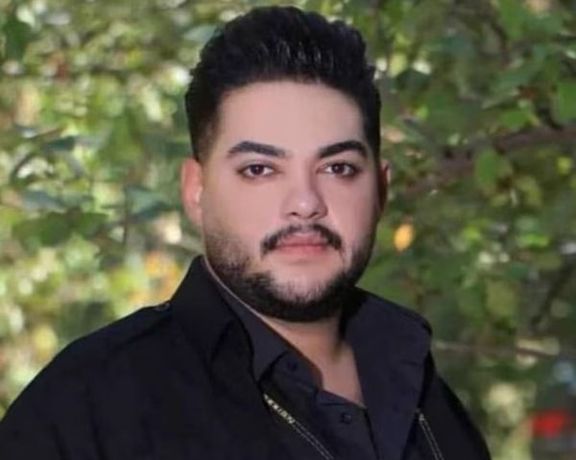
One hundred political, Iranian Kurdish civil and human rights activists demanded accountability from the regime regarding the killing of Kurdish political prisoners.
In a statement on Friday, the signatories slammed the "arbitrary arrests" and deaths of Kurdish political prisoners, expressing serious concern over the practice.
The judicial authorities and related security institutions are responsible for saving the lives of political prisoners and any delay and failure to address the issue will heighten the public sensitivity in this regard, the group stated.
In recent days, the bodies of at least two Kurdish political prisoners, Peyman Galwani, 24, from Mahabad, and Mousa Esmaili, 35, from a village in Piranshahr in Iran’s West Azarbaijan province, have been handed over to their families by the security agencies.
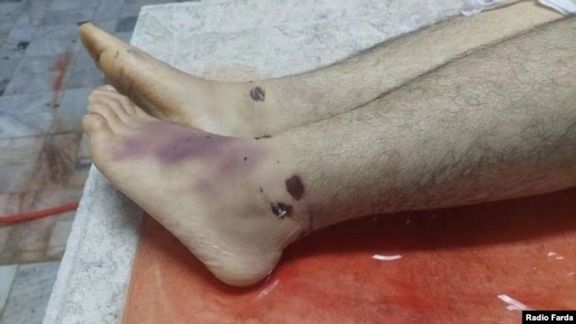
Kurdish human rights organizations reported that both of them were tortured to death in detention.
Galwani’s family was informed that he had "fallen from a height" leading to his comatose state, the cause of death given for innumerable opposition activists, which many believe were in fact murdered by state agents.
He was violently arrested by the security forces at his family home in Mahabad on June 25.
Esmaili was arrested on May 7 while agents confiscated his car. According to Hengaw, a source close to Ismaili's family said, "without any explanation or providing evidence of any judicial process and trial the security officers only said that Mousa was executed.”
Iranian intelligence and security agencies often bring unsubstantiated charges against dissidents, who are then tried behind closed doors without a lawyer. Several have died in unclear circumstances and torture.

Despite Russia’s siding with the UAE this week regarding sovereignty over three Iranian islands, Moscow has tried to somewhat contain the fallout.
Last week Russia supported the United Arab Emirates’ sovereignty over three contested islands - Abu Musa, and the Greater and Lesser Tunb - in the Persian Gulf, causing diplomatic frictions with Iran.
In a bid to repair the diplomatic furor, Russian Deputy Foreign Minister Mikahil Bogdanov told Iran’s ambassador to Moscow Kazem Jalali on Friday that “the Russian Federation respects the sovereignty and territorial integrity of the friendly country of Iran”.
IRNA, the state news agency claimed that the remarks indicated that Russia had revised its position on the three islands.
However, a tweet by the account of the Russian Foreign Ministry used the term Arab Gulf for the Persian Gulf on Wednesday to insist on its stance. The move by the Russian Foreign Ministry again drew widespread criticism from Iranians on social media.
The Foreign Ministry summoned Russia's ambassador and Foreign Minister Hossein Amir-Abdolahian and government spokesman Ali Bahadori wrote in separate tweets that "Iran will not compromise over its national interests and territorial integrity."
However, Tehran’s official reaction to Russia has been meek. The two have collaborated more deeply over the last year, including Iran’s providing Russia with drones and ammunition for its war in Ukraine.
Social media users recognized that officials had made a compromise by not naming Russia in their tweets as tensions simmered behind the scenes.

Four border guards were injured in a booby trap car bomb near the Mirjaveh border with Pakistan in Iran’s Baluch populated southeast.
According to state news agency IRNA, the condition of three of the injured is stable, but one was transferred to the provincial capital Zahedan for treatment.
Haalvsh website, which covers the events in Sistan-Baluchestan province, earlier reported that a military vehicle was targeted by an explosion in the Shahrak area of the border town of Mirjaveh.
It quoted local sources as saying that the situation is tense, and said military vehicles are patrolling the city. No group has yet claimed responsibility for the explosion.
Last week, an attack on a police station in the Sunni majority city of Zahedan claimed the life of two policemen. According to Iranian law enforcement officials, four gunmen who used hand grenades were also killed.
Tensions in Sistan-Baluchestan have been high since security forces, under the command of the Revolutionary Guards, killed an estimated 80-90 civilian protesters in the city on September 30, which became known as Black Friday.
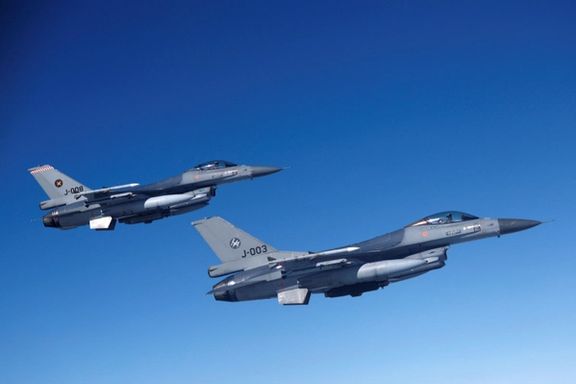
After adopting a more active posture to deter Iran in the Persian Gulf, the Pentagon said Friday it will deploy more warplanes to protect shipping in the region.
The US already uses A-10 fighter jets to patrol the strategic waterway, in particular the narrow Strait of Hormuz from Iranian attempts to seize oil tankers navigating in international waters, but it will now deploy additional F-16 jets.
A Pentagon official speaking to reporters on condition of anonymity said the F-16s will be an additional element to deter Iran and provide protection to commercial shipping.
Iran’s latest attempt to interfere with commercial shipping occurred earlier this month when it tried to seize two vessels. The US Navy announced July 5 that it prevented Iranian naval forces from diverting the vessels including the Richmond Voyager, a supertanker managed by Chevron in the Strait of Hormuz, the narrowest part of the Persian Gulf.
The official said that in both cases Iranian forces withdrew as the US Navy arrived on the scene.
Iran has been harassing commercial shipping in recent years and seized multiple vessels since 2019. Over the years, Iranian speedboats also harassed US Navy ships, sometimes in dangerous maneuvers.
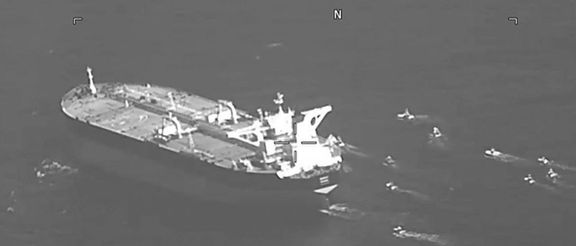
“[The] United States will not allow foreign or regional powers to jeopardize freedom of navigation through the Middle East waterways, including the Strait of Hormuz,” National Security Council Coordinator for Strategic Communications John Kirby told reporters May 12. The US Navy in early June said that Iran had interfered with or attacked 15 internationally flagged merchant ships over the past two years.
Iran’s provocative actions come as attempts to restrict its uranium enrichment and reach a nuclear agreement have remained unsuccessful since President Joe Biden assumed office in January 2021. Iran has expanded military cooperation with Russia, supplying hundreds of kamikaze drones that are being used in Ukraine against civilian and military targets.
The Pentagon official also told reporters the US is concerned about more Russian aggressive actions in Syria in collaboration with Iran and the Syrian government.
Recently Russian warplanes tried to interfere with operations of US military drones that were trying to attack Islamic State group targets in Syria.
The official told reporters that Iran’s supply of drones to Russia and support for the invasion of Ukraine has given political leverage to the Islamic Republic that wants to use the Russians to expel the United States from Syria. The US also believes there is more planning and intelligence sharing cooperation now between Russian and Iranian IRGC forces in Syria to pressure US to withdraw troops from Syria.
Iran also probably wants to use escalatory tactics to force Washington to accept its terms in recent reported diplomatic contacts between the two sides aimed at some sort of a deal over three Americans held hostage by Tehran.
Iran wants Washington to agree to around $20 billion of its funds in third countries to be released, which would be significant for its beleaguered economy. Iraq holds around $10 billion of debts to Iran, while South Korean banks hold another $7 billion.
Pro-Iranian Iraqi Shiite militia groups also organized a protest Friday near the US embassy in Baghdad, demanding non-interference by the United States in Iraq’s internal affairs. Iran however, is deeply enmeshed in Iraqi politics using its proxy forces.